June 28, 2025 – Veterans of North Country Honor Flight #63
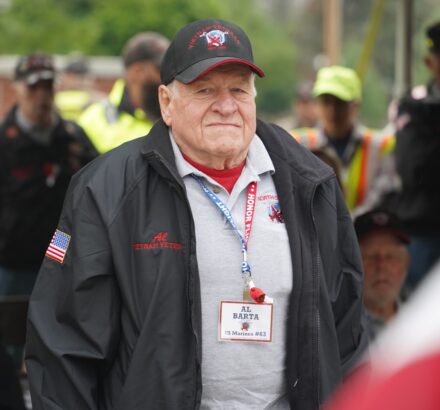 Alois Barta – US Marines 1960 – 1990 Vietnam
Alois Barta – US Marines 1960 – 1990 Vietnam
Al Barta came from a large military family. Al had 8 brothers who also served their Country: 2 in WWII, 2 in Korea and 4 others during Vietnam. Al’s 30-year career in the Marine Corps introduced him to many others who would become like family. The comradery was crucial. Al did 3 tours of Vietnam, as part of the Marine Wing Support. He arranged airdrops of supplies to the Marines on the ground. Al said sitting in an aircraft loaded with fuel and ammo is not a comfortable ride. Two A-4 Skyhawks would bomb and drop Napalm on the landing zone before the KC-130 would make its drop.
In between his second and third tour, Al got to work on the C-54 Sky master transporting VIPs over to Europe, during this time, Al attained the rank of Master Gunnery Sergeant.
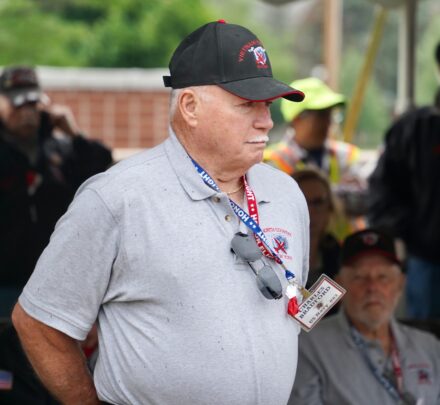 Charles Bradford – US Navy 1963- 1967 – Vietnam
Charles Bradford – US Navy 1963- 1967 – Vietnam
When Charles Bradford joined the Navy, he had no idea that of his 4 years, 3 of those would be spent traveling the world. Unfortunately, some of that time would include delivering fuel and explosives to Vietnam. A missile attack is always on your mind, the average survival time after a missile attack is 12 seconds.
Charles was aboard the Destroyer Hawkins, as well as, the Adirondack Class Command ship, USS Pocono. Charles was at the Gulf of Tonkin, a major incident which brought the United States deeper into war.
Charles sailed the world after leaving Vietnam. He went through the Suez Canal, the Panama Canal and was initiated a Shellback when crossing the equator.
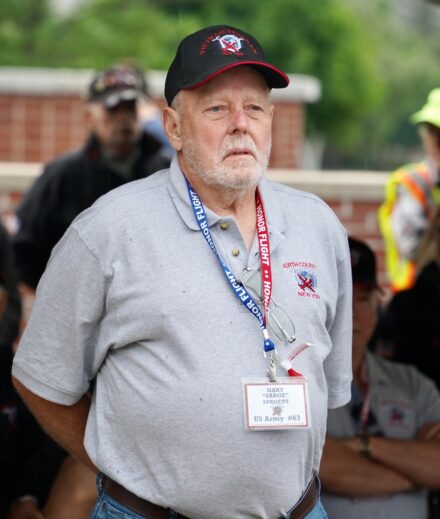 Gary Sargent – US Army 1964 – 1967 – Vietnam
Gary Sargent – US Army 1964 – 1967 – Vietnam
Gary Sargent was trained as a turbine helicopter repairman. Once in Vietnam, he volunteered as a door gunner on a UH 1B Huey. Gary never turned a wrench after that. Gary manned the M-60 machine gun with the butterfly trigger.
Gary’s helicopters went down 3 separate times under fire. Gary realized just how lucky he was to have survived those crashes, as well as the enemy fire directed at him. The average life expectancy of a door gunner is 5 minutes during an intense battle.
After surviving with only hearing loss due to being located right next to the turbine engine, Gary went on to become a Crew Chief transporting Generals and VIPs all over Vietnam.
One of the nicer moments Gary reflects upon, was when Gary’s Huey escorted Raquel Welch to Bien Hao Air Base for the Bob Hope Show.
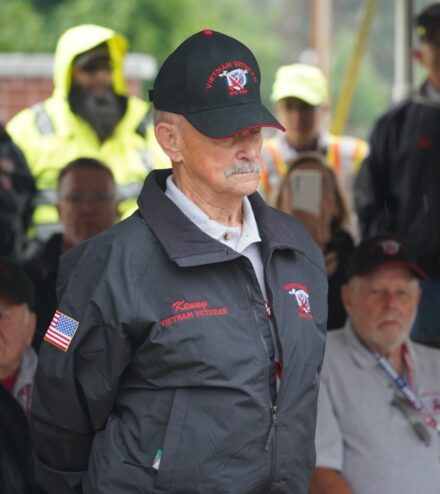 Kenneth Cheyne – US Army 1960-1962 – Vietnam
Kenneth Cheyne – US Army 1960-1962 – Vietnam
Drafted into the Army at age 23, leaving his hometown of Chateauguay for the very first time. Kens military journey began at Fort Dix, where boot camp tested his limits.
He continued training at Fort Stewart, Georgia, which reminded him of the comic Beetle Bailey, and later served at the beautiful Fort Belvoir in Virginia, a true class A base.
Kenny was assigned to the Supply Crew, responsible for distributing materials and gear across the base—an essential role that taught him responsibility, teamwork, and the value of logistics. While he missed his mother’s cooking, he found pride and purpose in his service.
Kenny believes the military is a great path, especially for someone from a small town. The Army placed him where his strengths could shine and gave him life lessons he’s carried ever since.
Over his two years of service, he met a cast of characters and learned that you were never alone—there was always someone ready to join him on the next adventure.
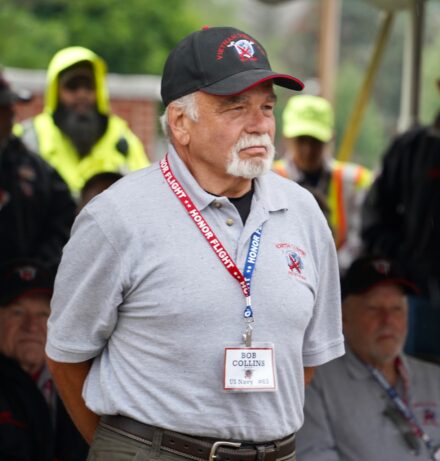 Robert Collins – US Navy 1972-1973 – Vietnam
Robert Collins – US Navy 1972-1973 – Vietnam
Bob grew up on a farm and came from a very poor family. His family couldn’t afford for him to attend college. He didn’t know what to do so talked to a recruiter and he and a friend enlisted via the Buddy Program as they felt the Navy had a lot to offer.
Boot Camp for Bob was in Orlando, FL and he graduated first in his class from “A” School. After “A” School he got the first spot as a Nuclear Machinist Mate.
Bob was on the USS Lexington in Boston. He got to witness pilots qualify to train to land on a carrier. He saw a couple of them lose their lives due to the training.
One day, while Bob was the Master of Arms at the chow hall, he wasn’t paying attention and there was a Lieutenant standing there pointing to his own name. He didn’t recognize him but after a few times of watching him point to his name, Bob realized it was his best friend, Greg LaGoy. Due to his rank, he wasn’t allowed to speak to him so the next day Greg handed him a note and asked to get together. They enjoyed catching up.
Joining the Navy gave Bob purpose, propelled him to live a productive and healthy life and set him up for a successful future.
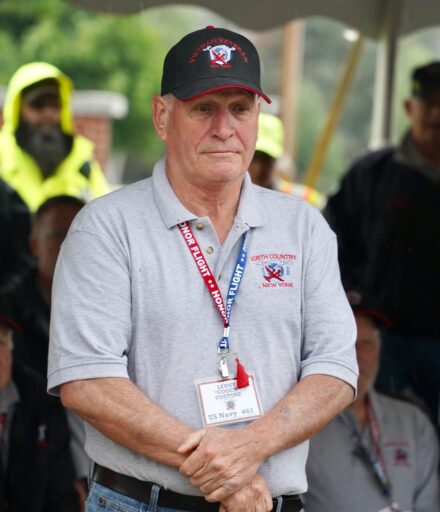 Leonard Couture Jr. – US Navy 1970 – 1973 – Vietnam
Leonard Couture Jr. – US Navy 1970 – 1973 – Vietnam
For Lenny, it all started in 1969 when a parent of his friend called and told him that he had won the lottery. Lenny didn’t know that she was the head of the Selective Service and had been drafted # 4 in the first draft since WWII. So, Lenny joined the Navy and ended up at the jet engine school in Memphis, Tennessee. In Memphis he also attained his private pilot’s license. Then, it was off to Vietnam with the VF103, an F-4 Squadron.
One night, while the F-4 was chasing an M16, the entire engagement was being broadcast to the 5,000 seamen on board the USS Saratoga. That event was the only nighttime kill of a M16 during the entire Vietnam War.
On another night, a bomb landed 50 feet from Lenny’s bunk, luckily that bomb never exploded, and Lenny realized just how very lucky he actually was.
Christmas 1972, the Phantoms helped level Hanoi bringing a close to their operations. Lenny was initiated into the Shellbacks when crossing the equator on his way home. Once home, Lenny attended Hot Pad Duty in Key West and Top Gun in California.
Lenny is the Vermont Liaison for North Country Honor Flight. He is always ready and willing to help and continues to be a huge asset. This will be Lenny’s first flight since retiring as a commercial pilot for American Airlines 6 years ago.
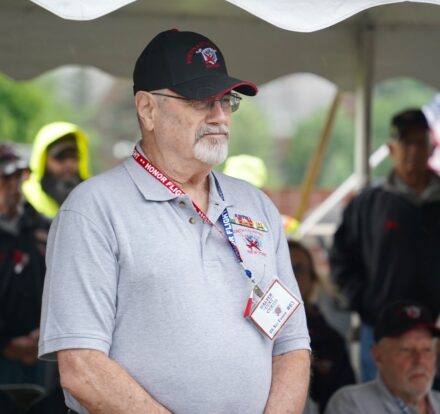 Walter Curtis III – US Air Force 1964 – 1968 – Vietnam
Walter Curtis III – US Air Force 1964 – 1968 – Vietnam
Walter is known as Curt to his friends and family, but if you ride with him, you can call him by his road name with the Combat Veterans Motorcycle Association, Wingnut.
When Curt decided that college wasn’t for him, he knew that the university would notify the Draft Board, so he joined the Air Force so he wouldn’t end up in a rice paddy with the Army.
Curt worked installing electronics in control towers throughout Thailand. The 483rd received 2 Outstanding Unit Awards with V for Valor during his tour. On one occasion, Curt thought a bee went flying by his ear up in the control tower, the second time it happened he realized that he was the target of a sniper, thankfully not an accurate sniper.
Curt was awarded the Missileman’s Badge, also known as the Pocket Rocket. This award is only given to qualified missile personnel who have been trained in the launching of land based or air launched nuclear weapons.
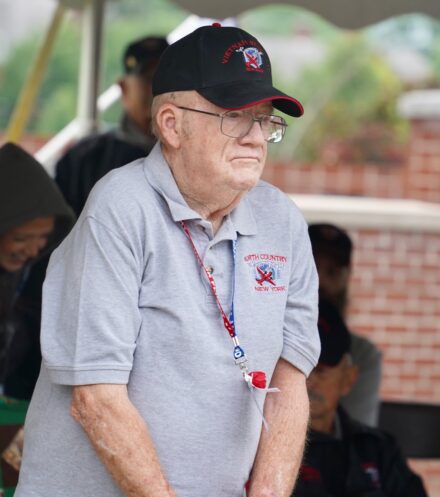 Douglas Johnston – US Army 1963-1966 – Vietnam
Douglas Johnston – US Army 1963-1966 – Vietnam
Doug was an only child, and his family gave him a choice to either finish high school or go in the service. He chose to go in the Army.
Doug did Boot Camp at Fort Dix and AIT at Fort Devens. He was then shipped to Korea and was in communications as a telephone, radio operator.
Doug’s first mission in Vietnam was to recover dead or wounded bodies. One time his crew chief told him not to recover one of the bodies and it was a good thing as they later found out it was a booby-trap.
While at Fort Benning, Doug received word he was going to Vietnam. Even though he was an only child, and he didn’t think he would have to go overseas twice, the whole unit was sent so he had to go.
While in Vietnam and still in communications, he was listening to all of the excitement, which ended up being the helicopters. His parents weren’t happy, but he became a door gunner on a Huey helicopter. He also inherited a pet monkey that went in the helicopter and was passed on eventually to the next door gunner.
They all considered each other family and there was one time he was sick and couldn’t go with them. His crew never returned.
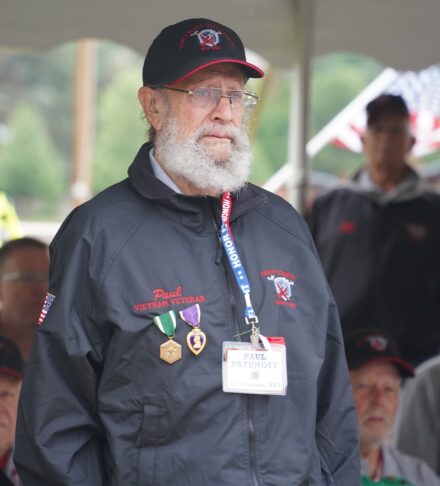 Paul Patunoff – US Marines 1968 – 1971 – Vietnam
Paul Patunoff – US Marines 1968 – 1971 – Vietnam
Paul Patunoff landed in Da Nang as part of Lima Company, Third Battalion, First Marines. Paul would go on to take part in 250 combat patrols. Lance Corporal Patunoff received the Marine Corps Commendation Medal for repeatedly distinguishing himself by courage and composure under fire.
One such patrol was only 3 men, a radio man, a rifleman and Paul, loaded with 50 rounds for his M79 grenade launcher. The Viet Cong snuck up and attacked rendering his radio man blind and mortally wounding his rifleman. Paul sent all 50 rounds at the enemy to buy enough time to escape. Paul carried his rifleman, even though he thought that he might be gone and guided his radio man out of harm’s way back to the perimeter. Paul received a Purple Heart after taking shrapnel in the neck during a patrol through a rice paddy.
Paul says the only good thing that came out of the Vietnam War was the GI Bill, allowing him and fellow military to pursue higher education.
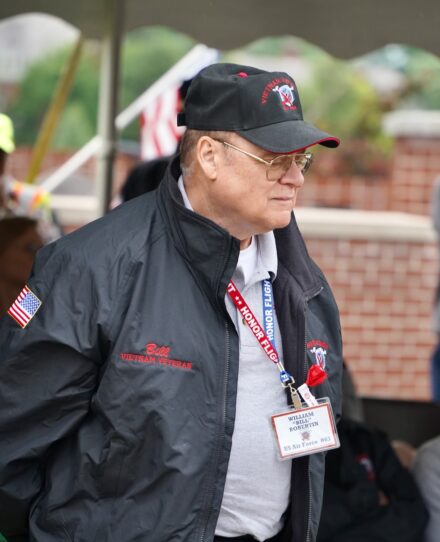 William Robertin Jr. = US Air Force 1966 -1989 – Vietnam
William Robertin Jr. = US Air Force 1966 -1989 – Vietnam
William Robertin Jr. comes from a military family in which 5 of 6 brothers proudly served their Country: 3 Army, 1 Marine and 1 Air Force. Bill also has 5 grandchildren serving our Country. Bill spent 23 years in the Air Force, mostly with the 380th Civil Engineers. His years of service brought him to Germany, Turkey and Italy, as well as TDY to Vietnam.
One of Bill’s jobs was rapid runway repair for the F-4 Phantoms. When full repair wasn’t possible, a matting was placed over the bomb holes.
Bill was later sent to close the bases in Spain, France, and Libya. Bill also remembers being treated very poorly upon his return home in San Francisco. The verbal insults soon turned into the throwing of eggs and tomatoes.
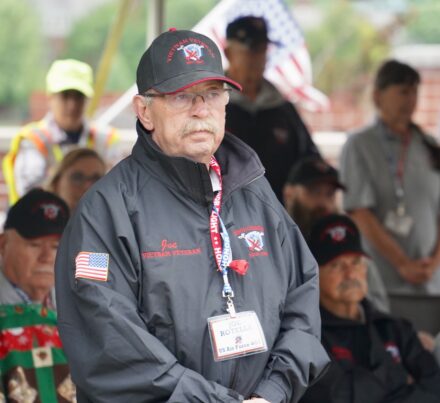 Joseph Rotella Jr. – US Air Force 1967 – 1988 -Vietnam
Joseph Rotella Jr. – US Air Force 1967 – 1988 -Vietnam
Joe served his Country for a span of 21 years, 6 1/2 of those were overseas. Joe found the hardest thing to get in a war zone was hot water, occasionally he would get lucky at 3:00 am.
Joe’s unit didn’t always carry weapons during their normal work. If fighting did break out, they would go into the Conex building to get the M-16s and they were given 2 clips per person. With only 2 clips, Joe said that they could have done more damage by throwing the clips at the enemy.
Joe’s job was to deliver the mail. This sounds simple enough but as a Master Sergeant, Joe knew the importance of this mission. Mail call was a crucial part of anyone overseas, morale and even life itself could be changed by a piece of mail.
Each day, two 707’s a day would drop mail which was sorted and put into 15 tractor trailers. At Christmas time, the Army would come in to help, even though they were not allowed to be in Saigon.
Joe is very proud that he and his people understood the important work they were doing and gave their all every day.
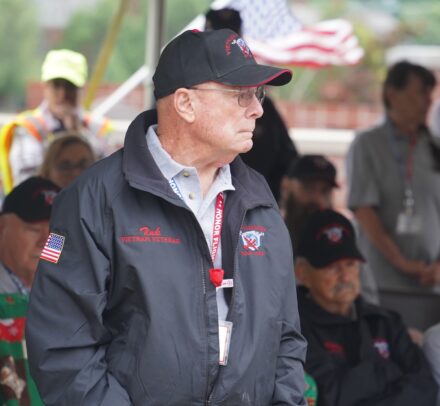 David Spaulding Tinker – US Army 1966 – 1969 – Vietnam
David Spaulding Tinker – US Army 1966 – 1969 – Vietnam
David Spaulding Tinker served as the Unit Commander for the Combat Engineers. David’s unit was responsible for transporting ammunitions and supplies to the various units throughout Vietnam. David’s 805th delivered to the 1st Cavalry, as well as the 101st Airborne in places like Khe Sanh, Au Shau Valley and Saigon.
Once David received orders to go home, he went through a rocket attack in Phu Bai, another rocket attack in Da Nang that killed 40 new recruits and finally survived the first ever rocket attack at Cam Ranh Bay.
David was proud of his work with an orphanage supplying food and money to the unfortunate children of South Vietnam.
David returned home to the name calling and egg throwing by the anti-war protestors in California. He would later find out that the Agent Orange dust from all those roads he did transports on would devastate his health.
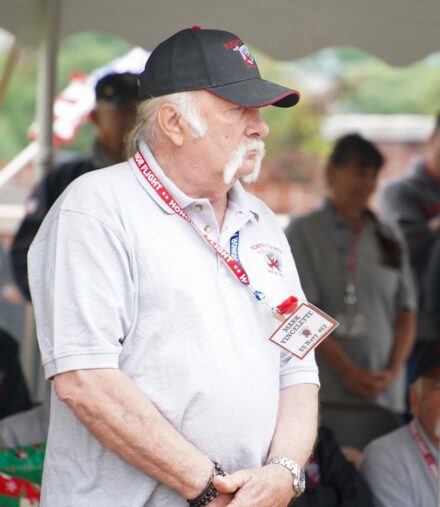 Mark Vincelette – US Navy 1967 – 1975 – Vietnam
Mark Vincelette – US Navy 1967 – 1975 – Vietnam
Mark did 2 complete tours of Vietnam. He saw much of the country from Cam Lo to Saigon. As a member of the famed Navy Sea Bees, he was constantly on the move. Mark was in Da Nang and said it was hard to realize that there was actually a war going on. Then he ended up in Quang Tri Province where he found out that there was definitely a war going on.
Mark was at Hill 10 towards Cambodia, where their job was to create a berm around the entire complex for protection. He was also at Con Thien, where the Sea Bees had to reestablish control for the 101st Airborne.
Mark was also aboard the USS North Hampton, a cruiser which was the Presidential Flagship. This is where the President would be brought in case of disaster. President Kennedy was aboard the North Hampton in 1962. President Johnson was aboard in 1966.
Mark says that the most memorable thing about his service is the comradery developed with the people that you serve with.
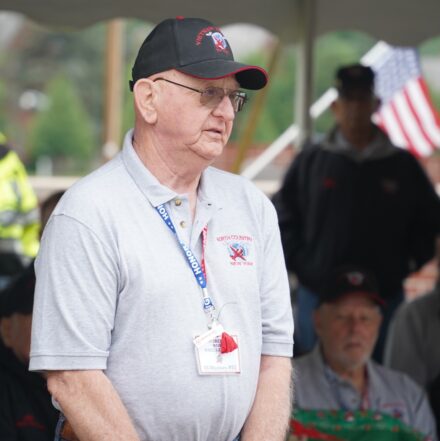 Robert Wheeler Sr. – US Marines 1965 – 1968 – Vietnam
Robert Wheeler Sr. – US Marines 1965 – 1968 – Vietnam
Robert joined the Marine Corps on the Early Entry Program after graduating High School. He entered bootcamp at Parris Island and then travelled to Camp Lejeune. In October of 1966, Robert received orders for Vietnam where he was assigned to the 60 MM Mortars in G Company, 1st Battalion, 9th Marine Regiment. This company would become known as “The Walking Dead.”
General Giap, Commander of The People’s Army, promised to annihilate the 1st Battalion, 9th Marines to honor his friend Ho Chi Minh’s birthday. According to Giap, they were already dead, just not buried yet. Persistence and resilience led to their survival despite heavy casualties.
Bob received 3 Purple Hearts during his time in Vietnam. He was actually recommended for a 4th, but he would have had to stay in Country to receive it, Bob said, “No thanks, I’m headed home!
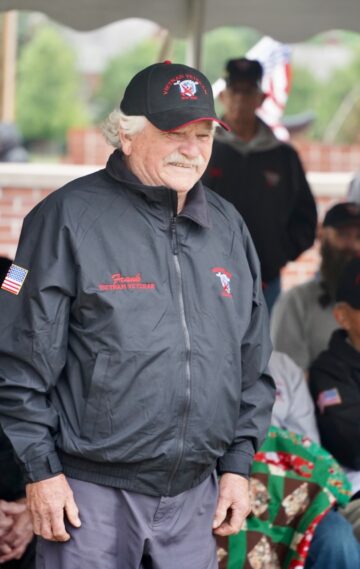 Frank Woodward – US Army 1964 – 1967 – Vietnam
Frank Woodward – US Army 1964 – 1967 – Vietnam
Frank was a Radio Teletype Operator for the Petroleum Distribution Command. Frank was named soldier of the month once; his reward was to drive around the brass. The Brigadier General was in the front, the Major General and the Commanding General were in the rear. Frank kept opening the door for the Commanding General at every stop. The Commanding General told Frank that he did not need to do that, his job was to drive, if I need my door opened, the Brigadier General can do that.
Frank comes from a long line of military family. His father was in The Battle of the Bulge and was shot in The Ardennes Offensive with the 99th Infantry. His Uncle Keith was killed on Iwo Jima with the 5th Marines. The Lyon Mountain Legion is called the Sorrell Woodward American Legion after Keith.
Frank’s proudest moment in uniform came when he visited his Aunt Ethel Bromley. Ethel came to tears when she saw Frank in uniform. She said that he looked just like her husband Barnard before he was shot down in WWII during The Battle of Biscay.
Frank went on to further serve his Country by working 20 plus years for immigration.
Posted: June 28th, 2025 under Adirondack Region News, Community Events, General News, National History, National News, Northern NY News, Peru/Regional History, Veterans' News.
